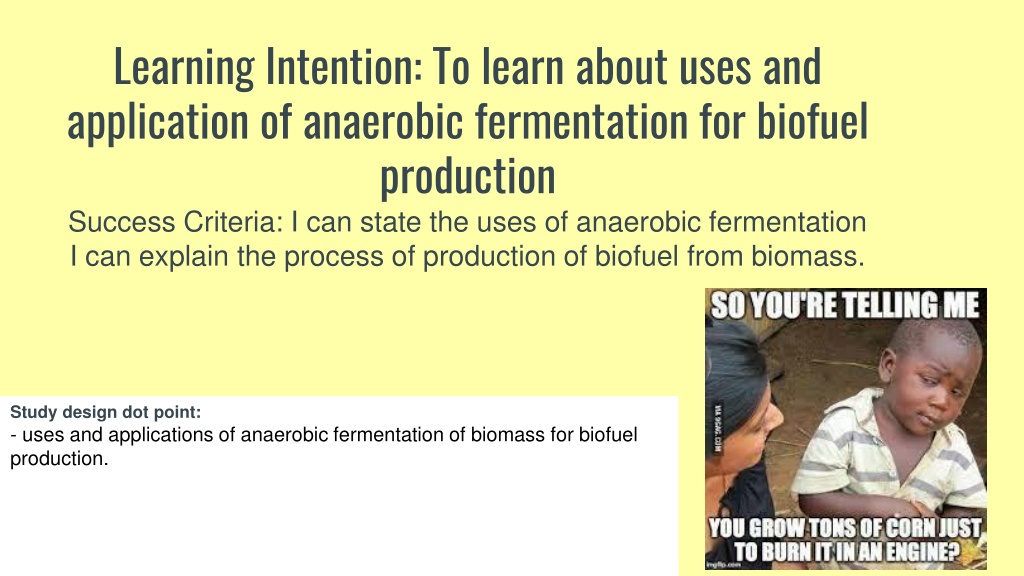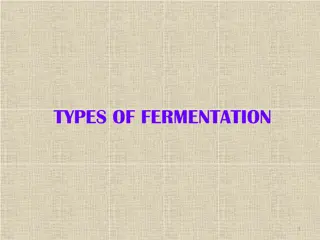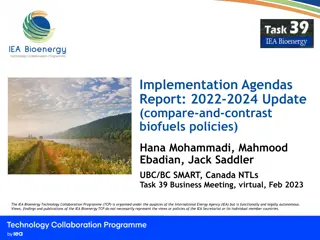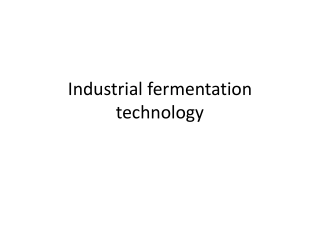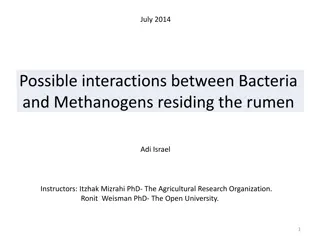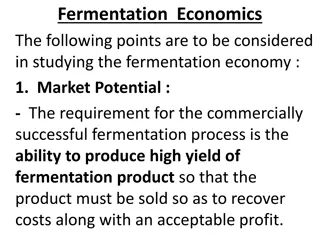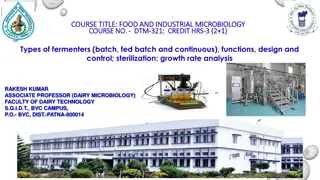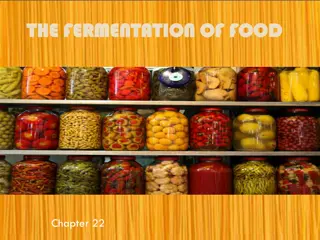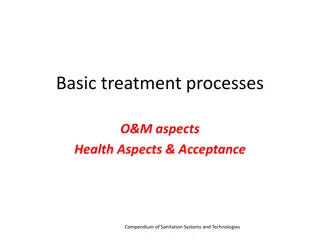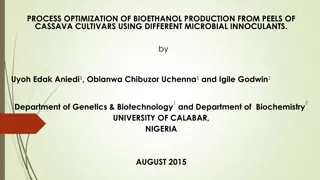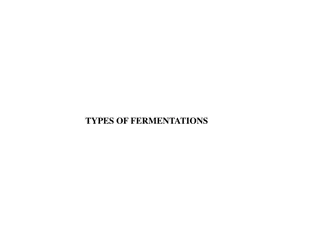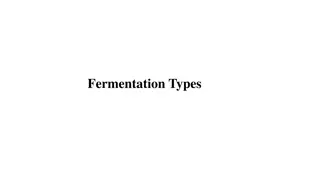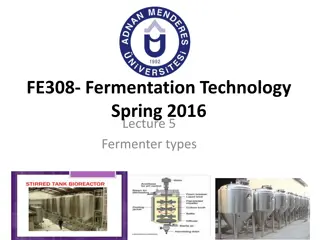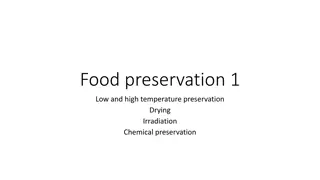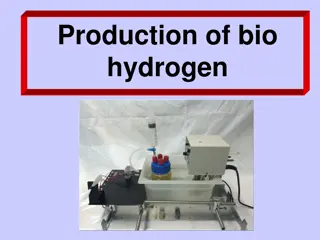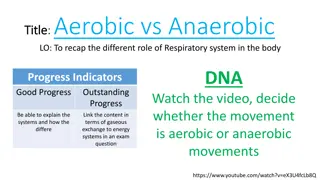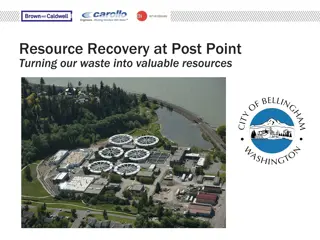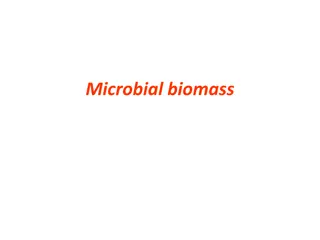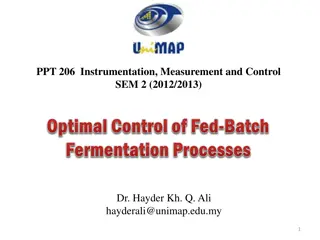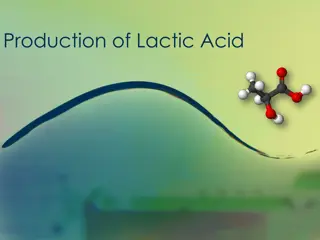Anaerobic Fermentation for Biofuel Production: Uses and Applications
Anaerobic fermentation is a key process converting biomass into biogas without oxygen. Biofuels, such as bioethanol and biodiesel, derived from biomass like agricultural and industrial waste, offer renewable and environmentally friendly energy alternatives. The applications of anaerobic fermentation include treating organic wastes and generating biogas as a valuable by-product for various industries.
Download Presentation

Please find below an Image/Link to download the presentation.
The content on the website is provided AS IS for your information and personal use only. It may not be sold, licensed, or shared on other websites without obtaining consent from the author. Download presentation by click this link. If you encounter any issues during the download, it is possible that the publisher has removed the file from their server.
E N D
Presentation Transcript
Learning Intention: To learn about uses and application of anaerobic fermentation for biofuel production Success Criteria: I can state the uses of anaerobic fermentation I can explain the process of production of biofuel from biomass. Study design dot point: - uses and applications of anaerobic fermentation of biomass for biofuel production.
Anaerobic Fermentation Anaerobic Fermentation Anaerobic fermentation is a biological process that converts solid or liquid biomass to a gas (biogas) in the absence of oxygen. Biogas is a mixture of methane , carbon dioxide, water vapour and small proportions of other gases (e.g. hydrogen sulphide).
What is Biofuel Biofuels are made from organic material known as biomass, which is plant and animal waste material Sources of biomass: Biomass can be sourced in large amounts from industries such as agriculture, food, manufacturing, and forestry. Examples of biomass: Edible grains such as corn and sugarcane, and non-edible crops such as waste wood and waste paper.
Types of biofuels Bioethanol, Biogas, and Biodiesel. The difference between bioethanol and biodiesel is simply the process by which they are made. Bioethanol is derived from the fermentation of plant sugars (carbohydrates), while biodiesel is produced via the formation of fatty acids from natural oils like animal fats and vegetable oil (lipids and fats). Advantages of Biofuels 1. An alternative to fossil fuels like coal and gas, which are non-renewable. 2. Raw material is readily available and can be easily replenished. 3. Better for the environment, given that they are typically carbon neutral. 4. Biofuels can also be stored and used for energy generation. Note: Biofuels are carbon neutral because the carbon dioxide that is released during combustion was originally captured by the plant during photosynthesis. The carbon, therefore, is cycled back into the atmosphere and can be used again as an input for other photosynthesising plants in the future. So, there is no net increase in the amount of CO2 released into the atmosphere
Applications of anaerobic fermentation of Biomass Applications of anaerobic fermentation of Biomass Anaerobic fermentation is a very effective method of treating high moisture content organic wastes, and many implementations of anaerobic fermentation are driven by waste management needs, with biogas as a valuable by-product. Following are the applications of anaerobic fermentation of biomass: 1. Fermentation of forest and industrial residues: Raw materials containing sugars can be used as fermentation substrates. 2. Fermentation of agricultural wastes: Agricultural wastes are cost effective, renewable and abundant.
Steps for the production of bioethanol Step 1: The deconstruction of the original biomass: The biomass is treated to break it down to a point that increases its surface area enough to make the fermentation process more efficient. This is done by breaking down the cell wall and cellulose. Cell wall is broken down by enzyme breakdown, exposure to acids, mashing, grinding or heating. Step 2: Enzyme-catalysed hydrolysis of complex sugars: The broken down biomass is then exposed to enzymes (such as amylase) which break down the starch and cellulose and convert them into glucose and other sugars. This breaking down of polysaccharides is aided by the presence of water in a process known as hydrolysis. Step 3: Anaerobic fermentation to produce ethanol: Yeast is used to facilitate the anaerobic fermentation of the sugars produced in step 2. a large amount of ethanol is produced as a product of this fermentation. Final step: Distillation and purification of the ethanol for use as fuel: The ethanol is distilled via the removal of water, converting it into a usable form called biofuel. The biofuel is then purified
Pros and cons Pros and cons of Biofuels of Biofuels
Summary Biofuel is produced from organic material known as biomass, which is relatively easy to source and can include edible crops like corn and sugarcane, as well as waste material such as wood. Biofuels offer a potential alternative to traditional fossil fuels, given that they are considered renewable and are more readily sourced. One example of a type of biofuel is bioethanol, which is widely used in a blend with petrol.
Reflection Edrolo ch 6D Q1-4, 8, 10 -12 Biozone 60
